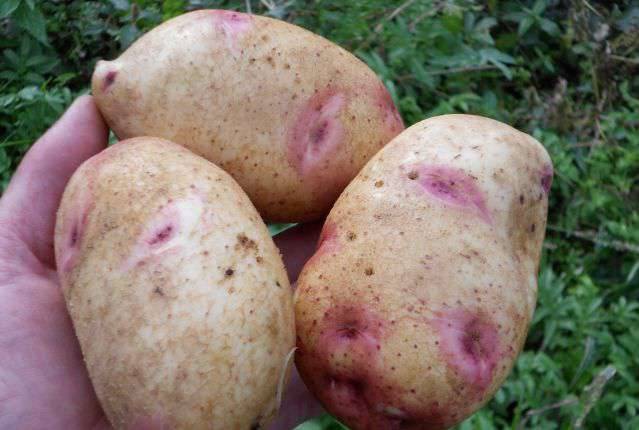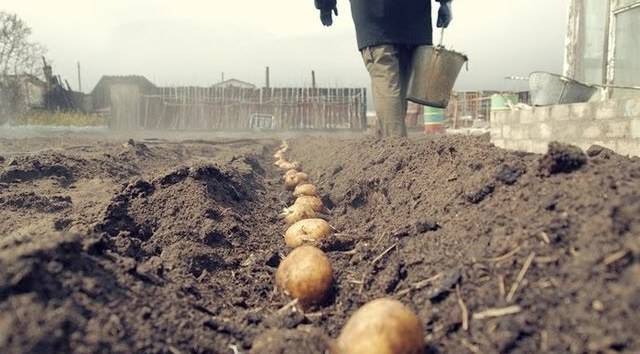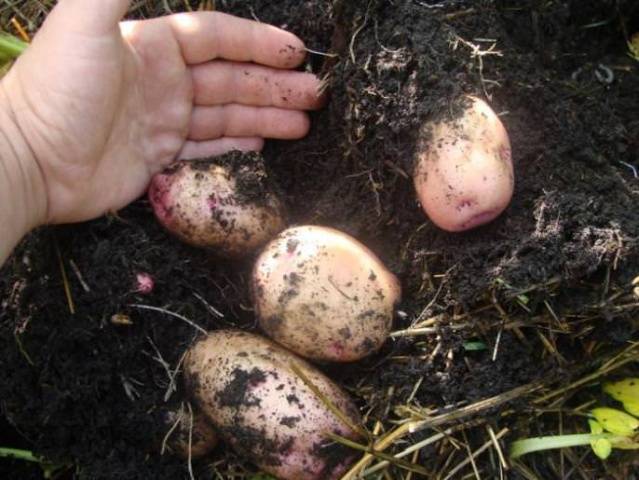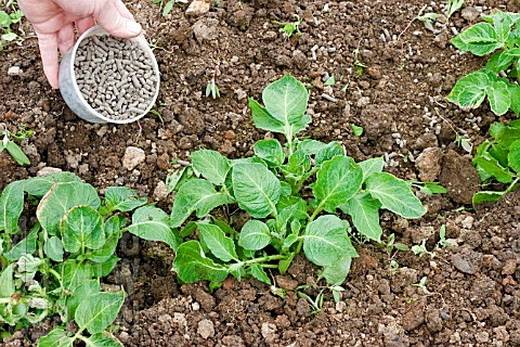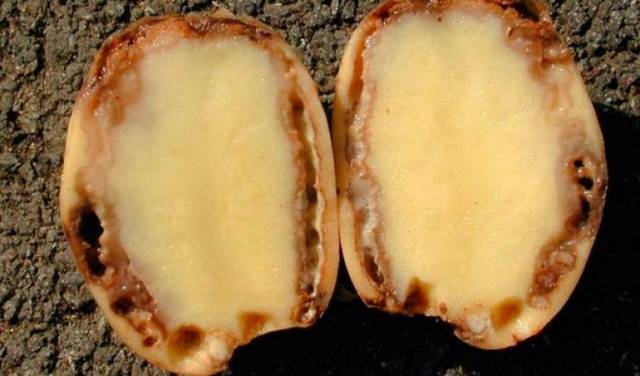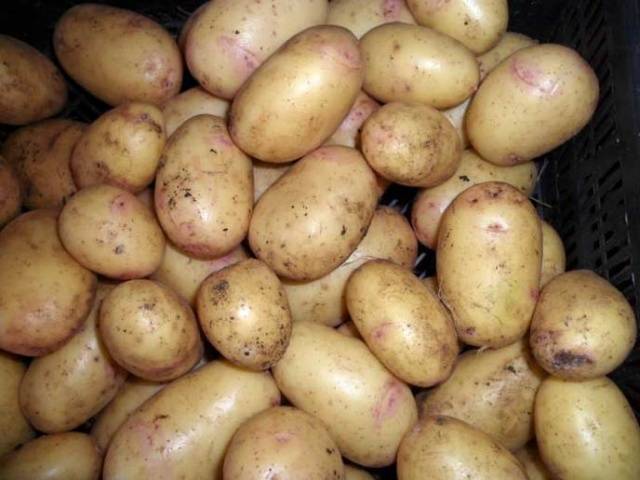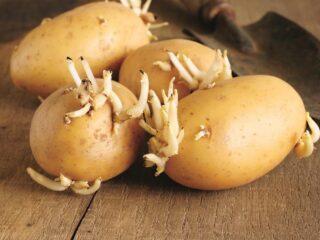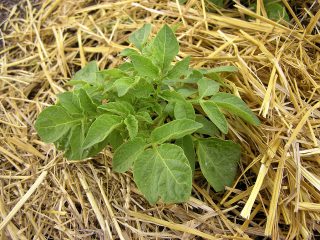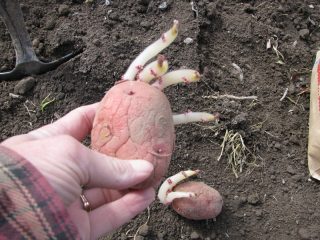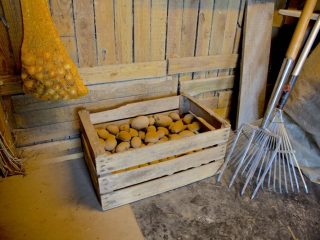Content
When growing potatoes, the vegetable grower focuses on the number of tubers, size and taste. Equally important is the adaptability of the variety to the climatic conditions of the region. An adapted crop suffers less and, naturally, produces a better harvest. In temperate climates, Galaxy potatoes will produce well, even with poor care from the gardener.
Origin story
The Galaxy variety is considered a new product. The root crop was developed by Irish breeders. Initially, scientists set themselves the task of obtaining an early-ripening variety that was practically not affected by late blight. Additionally, special attention was paid to taste, as well as the possibility of long-term storage of the crop during the winter period. The crop passed varietal tests and was distributed throughout the Russian Federation.
Description and characteristics
In terms of ripening time, the Galaxy variety is considered mid-early. The crop is high-yielding and is rarely affected by nematodes and late blight. The tubers have good taste, excellent presentation, and are resistant to mechanical damage. According to its intended purpose, the Galaxy variety is considered a table variety. The advantage of Irish potatoes is their stable yield every season. Detailed characteristics of the variety are given in the table.
Growing season | maximum 90 days |
Starch content in pulp | from 16 to 18% |
Tuber weight | about 90 g |
Number of potatoes in one bush | from 12 to 14 pieces |
Productivity per 1 ha | from 250 to 300 quintals |
Percentage of safety in winter in the cellar | about 95% |
Tuber skin color | white |
Flesh color | white with a yellowish tint |
Immunity to disease | nematode, late blight, cancer, average resistance to scab |
Best Growing Areas | the Galaxy variety is adapted to the climatic conditions of all regions of the Russian Federation |
Features of the variety | Standard agricultural technology is suitable for cultivation; the above-ground part does not dry out for a long time |
Features of tubers | the pulp does not darken quickly after peeling, excellent taste |
Purpose | tubers are used for any dishes, starch, but are best in demand when making purees |
Bushes of the Galaxy variety grow tall. The tops are powerful and do not lie on the ground. Peduncles of medium size. The corolla is bright red with a purple tint. Potato leaves are large and rich green in color. The root shape is oval. The eyes are small, painted scarlet around the perimeter.
Advantages and disadvantages
The Irish potato variety Galaxy has a number of undeniable advantages:
- the culture is resistant to bacterial and viral diseases, rarely affected by late blight;
- good presentation of tubers;
- excellent taste of the pulp;
- after cleaning, the tubers do not darken for a long time;
- stable high yield every season.
The disadvantages include average resistance to scab, as well as partially drying tops at the time of harvesting.
Landing
As for the Galaxy variety specifically, the crop grows best in the place of perennial and annual grasses, legumes, and grains.In sandy soil conditions, potatoes can be planted after lupine.
In the spring, before planting, fertilizers are applied during plowing to replenish the soil with nutrients. The optimal time for planting tubers is early May. Plant potatoes in rows. The row spacing is at least 60 cm. The distance between tubers is 35 cm. Planting potatoes are immersed to a depth of 10 cm.
About a month before planting, the tubers are taken to a bright, damp room. Here they will germinate until they sprout. It is advisable to sort through the potatoes to identify spoiled tubers.
Since autumn, many pests have hid in the ground for the winter. To prevent them from destroying the potatoes immediately after planting, the tubers are treated with fungicides.
Care
The Galaxy variety will bring a harvest even to a lazy vegetable grower, but with good care it will show the best results. The culture loves loose soil and a complete absence of weeds. Basic care for the variety requires compliance with the following rules:
- Fertilizer for feeding the Galaxy variety should be in an easily digestible form. The plant absorbs nutrients well from all types of compost, a slurry mixture of peat and manure.
- In case of freezing of the above-ground part by spring return frosts, the bushes are fed with mineral fertilizer containing nitrogen.
- After 100% of seedlings appear, the row spacing is constantly weeded from weed, loosen the soil. The procedure is carried out until buds appear on the tops.
- When the stems reach a height of 20 cm, the Galaxy potatoes are hilled up. Use a hoe or walk-behind tractor to rake up the soil on both sides of the row.
- The variety loves moist soil. During watering, bring the soil to a moisture content of at least 70% - maximum 85%.
When growing the Galaxy variety, the condition of the tops is monitored. If the Colorado potato beetle begins to chew on the leaves, the plantation is sprayed with pesticides.
The video shows the process of growing potatoes:
Hilling and feeding
The Galaxy variety, like any other potato, cannot do without hilling. The process stimulates the growth of the bush by removing weeds and improving oxygen access to the roots. Tubers set and grow inside the earthen tubercles. During the season, two mandatory hillings are carried out and a third, if necessary. The first procedure is performed after the tops have grown to a height of about 15 cm. The second hilling of Galaxy potato bushes is done 12 days after the first procedure.
The Galaxy variety responds well to fertilizing. The first fertilizer is poured into the holes when planting the tubers.
During the growing season, Galaxy potatoes are fed three times at the root:
- At the initial stage of tops growth. The Galaxy variety needs feeding if the bushes grow slowly, the stems are thin and weak, and the leaf blade is pale in color. Usually two recipes are used: 10 liters of water/1 tbsp. l. urea or 10 liters of water/0.5 liters of mullein slurry. The prepared solution in a volume of 0.5 liters is poured under the bush.
- During the formation of buds. Fertilizing potatoes of the Galaxy variety is needed to accelerate the appearance of flower stalks. The solution is prepared from 10 liters of water, 1 tbsp. l. potassium and 1 tbsp. l. ash.If there is no potassium sulfate, add 1 cup of ash to the same amount of water. 0.5 liters of the prepared solution is poured under each bush.
- During vigorous flowering. The third feeding of the Galaxy variety promotes tuber setting. The solution is prepared from 10 liters of water, 2 tbsp. l. superphosphate and 1 cup mullein slurry. Under each bush, 0.5 liters of the prepared solution is similarly poured.
Fertilizing under the root of the Galaxy potato is carried out after watering or precipitation, when the ground is still wet. The method is suitable for owners of a small plot. If the garden is large, it is difficult to water each potato bush. For application, dry mixtures are used, applying them by scattering under the bushes.
The composition for three dressings per 1 bush is as follows:
- 0.5 tsp. urea/200 g dry manure;
- 1 tbsp. l. ash/0.5 tsp. potassium;
- 1 tsp. superphosphate.
After applying dry fertilizers, the potato plantation is watered.
Diseases and pests
Potato diseases occur as a result of bacterial growth. Often the person himself is to blame for violating the cultivation and care technology. Most diseases are difficult, almost impossible, to cure.
Scab is considered a common disease. Some gardeners ignore this disease, considering it less dangerous. This is fundamentally wrong. Scab can destroy a lot of crops.
Among the pests that like to feast on potatoes are the Colorado potato beetle, wireworm, and nematode. The first problem is easier to identify. When the Colorado potato beetle appears on the tops or yellow larvae, the potato plantation is sprayed with chemicals. Nematodes and wireworms eat the tubers.The appearance of the pest can be recognized by the withering bushes. The development of parasites can be prevented by frequent mechanical tillage of the soil. When the first symptoms appear, chemicals are used.
Harvesting
Three months after planting, the Galaxy potato tubers will be ready for harvest. However, the exact date varies for each region due to weather conditions. Potato tubers are dug up using a shovel or mechanical means, such as a walk-behind tractor. For winter storage, use an equipped vegetable storage facility with good ventilation, humidity of about 85% and air temperature 3OWITH.
Conclusion
Galaxy potatoes are suitable for growing even for lazy gardeners. However, you should not speculate on the undemanding nature of the variety; you need to provide the crop with at least minimal care.
